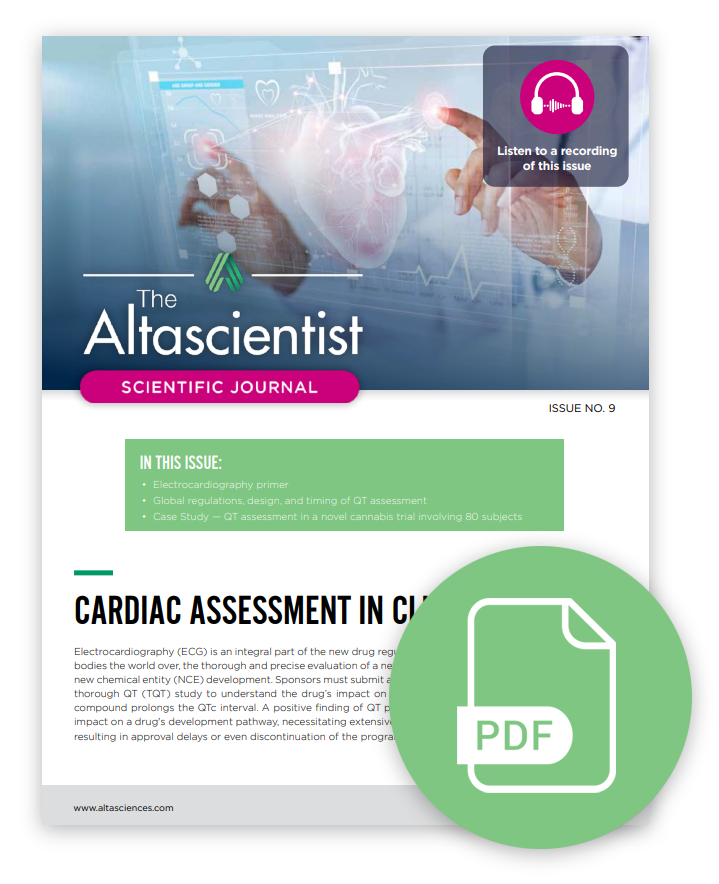ISSUE NO. 9 — Cardiac Safety Assessment in Clinical Trials
Electrocardiography (ECG) is an integral part of the new drug regulatory environment. Mandated by regulatory bodies the world over, the thorough and precise evaluation of a new drug’s cardiac effects is a critical element of new chemical entity (NCE) development. Sponsors must submit all NCEs with systemic exposure to a dedicated thorough QT (TQT) study to understand the drug’s impact on ECG parameters and determine whether the compound prolongs the QTc interval.
Mandated by regulatory bodies the world over, the thorough and precise evaluation of a new drug’s cardiac effects is a critical element of new chemical entity (NCE) development. Sponsors must submit all NCEs with systemic exposure to a dedicated thorough QT (TQT) study to understand the drug’s impact on ECG parameters and determine whether the compound prolongs the QTc interval.
A positive finding of QT prolongation usually has a significant negative impact on a drug's development pathway, necessitating extensive additional ECG assessments, and potentially resulting in approval delays or even discontinuation of the program.
In Issue 9 of The Altascientist, we review:
- Electrocardiography
- Global regulations
- QT/QTc study design
- Timing of QT assessments
- A case study about a first-in-human clinical trial involving a QT assessment
QT/QTc Study Design in Clinical Cardiac Assessments
A thorough QT/QTc study is usually conducted at the end of Phase II or in parallel with Phase III studies. It would generally include 40 to 60 healthy subjects as a crossover design, or up to 240 in a parallel design format. The trial design typically involves healthy male and female subjects, in a double-blind (except for the use of a positive control), randomized, single-site, crossover study.
Depending on the pharmacokinetics of the study drug, parallel designs for TQT investigations may also be used. For crossover studies, subjects are randomized to each of the following treatment groups, with appropriate washout periods as required according to the drug’s pharmacokinetic profile.
In order to accommodate the specialized needs of cardiac assessments, important considerations include ensuring fully-trained and expertly qualified staff, working with the latest monitoring equipment, limiting blood draws or other procedures that affect heart rate in close proximity to the time of an ECG, and ensuring sufficient space around the bed for staff to perform multiple operations with ease.
Explore all issues of The Altascientist in our Resource Center. And don’t forget to subscribe to “The Altascientist: Audiobooks” on Spotify, Apple Podcasts, or wherever you get your audio content.
Download publication